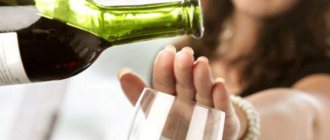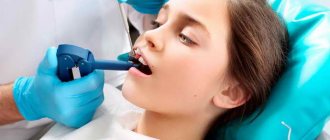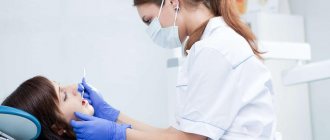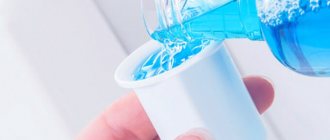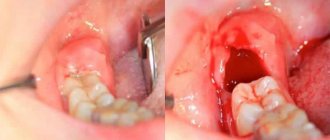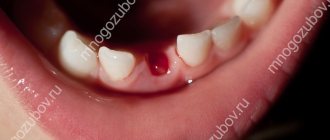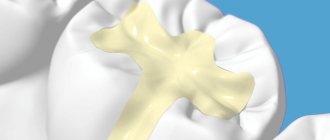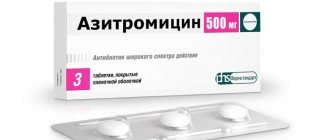Why should you avoid alcohol after dental anesthesia?
Drinking alcohol after a tooth has been frozen and its subsequent removal is not recommended.
Compositions such as Lidocaine, Novocaine, Ultracaine, and some others are used as freezing during treatment. These medicinal compositions act in such a way that the analgesic effect is exerted on a specific area, locally.
But, when the action of the active components of the drugs ends, the anesthetic substance penetrates the blood, entering the liver tissue. If you drink alcohol after dental anesthesia, the liver will receive an increased load. The filter organ will not be able to produce a sufficient amount of the enzyme responsible for the simultaneous breakdown of alcohol and medicine. As a result, poisoning may occur, because an increased amount of toxic substances will accumulate in the blood.
Liver cells in the process of increased production of the enzyme responsible for the breakdown of ethanol can be destroyed. This is how the body can react to alcohol after dental anesthesia. Medications from another category prescribed during treatment can also increase the effect of painkillers when combined with alcohol. This applies to antibiotics and drugs with an analgesic effect.
If you drink alcohol after dental anesthesia, the following consequences for the body are possible:
- increased blood pressure;
- increased heart rate;
- dizzy;
- nausea;
- weakness;
- breathing problems.
Alcohol after dental anesthesia can have an effect on brain activity.
From all that has been said, it is necessary to form a competent conclusion. If you drink alcohol after dental anesthesia, the active substances of the pain relief drug will remain in the blood for an indefinite time. As a result, the risk of toxic poisoning increases. Therefore, a person planning a medical appointment should not have any thoughts about whether it is possible to drink alcohol after dental anesthesia.
The harmful effects of alcohol on teeth
Not everyone understands why people are concerned about the question of whether it is possible to drink alcohol after tooth extraction. However, we should not forget that dental treatment or extraction, as well as dental implantation and any other manipulations in the oral cavity, even for an adult, can be extremely stressful. Many people simply cannot help but drink something strong before or after tooth extraction.
You can drink alcohol when you have a toothache - this is what drinkers think and prefer to use alcohol, including as dental anesthesia, despite all the prohibitions. In fact, here's how alcohol affects your teeth:
- promotes the leaching of calcium from the body, as a result of which teeth become fragile;
- some alcoholic drinks can corrode the enamel, after which the teeth change color and become more sensitive;
- substances vital for teeth and gums, such as iron, zinc, minerals and vitamins, are washed out of the body;
- Ethyl alcohol causes inflammation of the gums, making them weak and bleeding.
Alcohol destroys teeth inside and out. There are many myths about how to neutralize this negative impact. In particular, it is believed that you can protect the enamel from the harmful effects of acids and dyes contained in wine if you eat a piece of cheese after drinking this drink. In fact, the answer to the question of whether alcohol harms teeth is clear.
Any strong drink spoils your teeth, and this is a fact, so you should eliminate alcohol and your teeth will be healthier.
A separate topic for discussion are questions about whether alcohol can be consumed after dental treatment, and after how long, whether it is possible to drink after a tooth has been frozen or if there is medicine in the tooth, etc.
Alcohol after ultrasonic teeth cleaning
Having signed up for an ultrasound procedure to remove plaque, the client will receive medical advice on further care of the mouth and teeth. The dentist will explain what diet it is advisable to follow in the first days after the procedure, and what actions should be avoided until normal tooth sensitivity is restored. The doctor will definitely explain whether you can drink alcohol after brushing your teeth.
We suggest you familiarize yourself with the dangers of viral stomatitis in children and the subtleties of its treatment
During the first few days, teeth cleaned of plaque are characterized by increased sensitivity. Therefore, you need to adhere to a certain diet. You cannot eat or drink hot, cold, spicy, or sweet foods until 2 days have passed since the procedure.
It is not recommended to drink coffee, tea and other drinks, including alcohol, that contain dyes. If necessary, the doctor prescribes special medications to help overcome the increased sensitivity of the cleaned enamel.
Failure to follow these recommendations leads to a repeated procedure, a decrease in results, and also pain due to high sensitivity after cleaning. This is why your teeth hurt after drinking alcohol if you drink it immediately after an ultrasound procedure.
FAQ
A trip to the dentist often turns out to be spontaneous, but it’s not so easy to cancel planned events. Therefore, people often have the following questions:
Is it possible to drink alcohol after dental anesthesia?
The action of anesthetics is incompatible with alcohol, since alcohol increases the risk of allergic reactions, weakens the analgesic effect and increases the likelihood of complications.
When can you drink alcohol after tooth extraction?
You should not drink alcoholic beverages for 5 to 7 days in order for the wound in the gum to completely heal.
Is it possible to drink alcohol after dental treatment an hour later?
After dental treatment, the dentist usually recommends refraining from eating for 2 hours. Drinking alcoholic beverages is usually accompanied by snacks, so the answer is obvious.
How much alcohol should you not drink after tooth extraction?
In order for the wound to completely heal after tooth extraction, it takes at least 5 days, after which you can drink alcohol.
Why you shouldn't drink alcohol after tooth extraction
Alcohol dilates blood vessels, which can cause bleeding, swelling and bruises. In addition, alcohol is incompatible with anesthesia, which is usually required for tooth extraction surgery.
Is it possible to drink alcohol after wisdom tooth removal?
When removing a wisdom tooth, you should not drink alcohol for the same reasons as when removing a diseased tooth.
Is it possible to drink alcohol before tooth extraction?
You can drink alcohol before tooth extraction if the operation is performed without local anesthesia, but this is not advisable.
Why do my teeth hurt after drinking alcohol?
Many alcoholic drinks contain acids, dyes and many artificial ingredients that destroy tooth enamel, making it much more sensitive.
Is it possible to drink alcohol with an open tooth?
It is better to abstain for several days until the doctor installs a permanent filling.
Can I drink alcohol after teeth whitening?
After the whitening procedure, tooth enamel suffers the most. You can drink alcohol after brushing your teeth, but you should rinse your mouth afterward (especially after wine).
Is it okay to drink alcohol when your tooth hurts?
If a tooth hurts, as a rule, take a painkiller and plan a visit to the dentist in the next few hours. Therefore, drinking alcoholic beverages can only lead to the fact that the visit to the dentist will have to be rescheduled. Not every doctor will take on the responsibility of administering anesthesia to a person who has alcohol in his system.
How alcohol and anesthesia are combined
On the day of visiting the dentist, drinking alcohol is strictly prohibited because:
- it is unknown how the body will react to a mixture of alcohol and anesthesia, because these two chemicals after interaction can produce an unpredictable reaction;
- ethyl alcohol, contrary to the opinion about its anesthesia abilities, can neutralize the effect of the drugs themselves;
- double load on the liver;
- and in general, a doctor can refuse to admit a patient under his supervision; he has every right to do so.
Drinking alcohol after filling the teeth completely depends on the complexity and duration of the work being carried out; in this case, at least a day should pass after filling or grinding the teeth.
Is it possible to drink
If a regular cement filling was used, you can drink after 2-3 hours. If the cavity is closed with photopolymer, immediately after installation is completed. But the point here is not about strength, but more about anesthesia.
When exposed to it, sensitivity is minimal, so the patient may not feel the temperature of the drink and injure the mucous membrane.
Therefore, you need to drink very carefully, avoid too cold or too hot, and it is better to do this after the painkiller has worn off.
Materials for production
Various materials are used for temporary filling. Despite their different composition, they are all safe for the human body. Temporary fillings are made from:
- Artificial and water-based dentin. The material consists of two components, liquid and powder. The specialist mixes the components until a certain consistency is achieved.
- Oil dentin or paste. The powder, consisting of zinc oxide, kaolin and zinc sulfate, is mixed using a special oil. The time for complete hardening of dentin is 2 – 3 hours.
- Cement material. The composition after hardening is characterized by increased strength.
- Polymer materials. Single-component light-curing pastes are used. They are easy to use and have high adhesive properties.
Is it possible to drink alcohol
In fact, alcohol does not have any special effect, which means that theoretically it can be consumed. But the point here is completely different. In most cases, filling is performed under anesthesia, and it and alcohol are incompatible. Therefore, experts recommend abstaining from alcohol for at least a day.
We invite you to familiarize yourself with what the expression “tip on the tongue” means
The same can be answered to the question “can I drink beer?” After 24 hours, yes, you can. Beer does not contain coloring enzymes and fillings do not change color under its influence.
Food restrictions
During the first few days after the filling procedure, fresh fillings are extremely sensitive, and they are especially susceptible to the effects of certain products. To protect the delicate area from unwanted staining, you should avoid consuming certain foods for 2-3 days. Such as:
- red wine;
- strong tea and coffee;
- various sauces;
- dark colored grapes;
- berries, especially brightly colored ones;
- some vegetables (carrots and beets).
You should also exclude some solid foods from your diet. These products can cause the new filling to chip and destroy it. This:
- various nuts;
- unpeeled seeds;
- hard fruits;
- crackers, croutons and bagels.
This kind of diet will help preserve the new filling and give it time to gain a foothold in the oral cavity. Therefore, you should not neglect this advice to get a good result after filling.
After installing a temporary filling
A temporary filling is necessary for multi-stage treatment, which involves access to the cavity after several days or weeks. Therefore, the strength and aesthetic requirements for such materials are low.
But in any case, you must adhere to the specialist’s recommendations, otherwise the filling will fall out, pathogenic microbes will enter the cavity and the procedure will have to be repeated.
After installation of a temporary filling, patients are interested in the ability to eat and drink. These points need to be considered.
What is a temporary filling?
This type of filling is placed on patients to eliminate or prevent the development of the inflammatory process and to diagnose the condition of the dental nerve.
The name of the seal indicates the type of product. It is placed temporarily and after a certain period it will be removed and a permanent one will be installed. Dentists recommend avoiding its destruction, since such a structure must perform a protective function so that the pulp remains viable. It also allows you to monitor the condition of the dental nerve . The specialist decides for how long it is installed. Here a lot depends on the specific case.
Most often, this type of design is installed if it is planned to carry out treatment in several stages:
- treatment of deep caries;
- canal treatment;
- increase the effect of medications applied to the oral cavity.
Modern dentists use various materials to install non-permanent structures. They differ from permanent fillings in their raw material composition:
- artificial dentim based on zinc sulfate and zinc oxide;
- Vinoxol is made on the basis of liquid and zinc oxide, and such a filling can last up to 6 months;
- Dentim paste is available in ready-made form, is very plastic, and has a water-repellent effect;
- zinc-eugenel cement with an analgesic effect, resistant to stress;
- polycarbonate cement - plastic and resistant to moisture, does not destroy fabrics:
- Karyosan.
Before making a choice of material, the dentist pays attention to the affected tooth, the patient’s age and habits, and pace of life.
Types of modern fillings
The filling procedure is a measure to eliminate various defects that occur in hard areas of dental tissue. The resulting voids are filled with special material. Modern fillings differ in their composition and the characteristics of the material used.
Filling allows you to isolate sensitive and damaged tissue areas and prevent pathogens from entering the resulting cavity. Thanks to the use of the latest filling methods, this process for the patient is completely painless and quick.
How does the filling procedure take place?
All fillings are divided into two main types. This:
- Temporary. They are installed for a short period of time during long-term treatment of a damaged tooth.
- Permanent. This filling is carried out after completion of the main therapy in place of temporary fillings.
Permanent fillings are distinguished by the use of higher quality material and careful adherence to all rules when performing the procedure. After all, the sealed area is bound to serve for decades.
We suggest you read: Will garlic help cope with unbearable toothache or not?
How much can you not eat after having a filling installed?
All patients are interested in whether they can eat after having a filling installed.
You can eat food, but not immediately after the event, but after some time. Experts use various compositions, and each of them has its own hardening time. But first, you need to consider what you can’t eat after installing a filling in order to avoid its premature destruction.
The list of prohibited products includes all solid products, including chips and crackers, viscous - toffee and other products of similar consistency, coloring - coffee and tea, tomatoes, beets and the like. The consumption of hard and viscous products contributes to the destruction of the filling, and the use of coloring products causes a change in the color of the filling material.
Photopolymers - a breakthrough in dentistry
Photopolymer fillings simply will not harden outdoors when exposed to air; this requires exposure to a special ultraviolet lamp; thanks to this treatment, the disintegrated radicals of the heliocomposite activate the hardening process.
It turns out that immediately after rising from the dental chair you can eat.
In addition, light fillings have many advantages, they are:
- are aesthetic, which makes it possible to use them for restoration of the anterior dentition;
- they are very durable, which means they are used to restore chewing teeth;
- The average service life of light-curing products is 5 years.
For all its advantages, the light seal has a certain number of disadvantages:
- shrinkage - when hardening, it shrinks by 5 - 0.8%, which is why it comes off the tooth walls and caries may appear under it, with small filling areas this is not a problem, but if such an area is large, then complications arise;
- the appearance of deformation in the product itself during shrinkage;
- insufficient polymerization - under the influence of a polymer lamp it hardens by 60 - 70%, which negatively affects its strength and color qualities.
Important: photopolymer is a safe material even for pregnant women, so it is used to treat pregnant women.
Metal fillings harden for a very long time, and due to the increased amount of mercury, they cause allergic reactions and leave a metal aftertaste. We do not recommend installing them.
Treatment regimen for a tooth with arsenic
How much you can’t eat after filling a tooth directly depends on the material of the filling.
The old fashioned way - fill everything with cement
If, when filling a tooth hole, a specialist used the simplest option - cement, then it must be taken into account that cement:
- the cheapest option;
- the most short-lived, for example, if the solution is not prepared according to technology, then the cement product will crack and disappear after 2 - 3 years;
- it will not prevent a new outbreak of caries;
- The cement material hardens over a long period of time.
It is not recommended to eat for about 3 hours.
If glass ionomers are used
Glass ionomers are a modern analogue of cement substances; they:
- harmless to the body;
- they are not afraid of moisture, so they are easy to use in places that are difficult to dry, since getting there is problematic;
- harden quickly.
You can eat 2-2.5 hours after treatment.
Temporary solution - plastic filling
Plastic temporary fillings, in addition to their toxicity and tendency to cause inflammatory gum diseases, shrink very quickly, losing their shape under the influence of food and taking on the color of consumed drinks.
It is not recommended to eat food within three hours, although in any case such fillings will lose their appearance.
Photopolymers - a breakthrough in dentistry
Photopolymer fillings simply will not harden outdoors when exposed to air; this requires exposure to a special ultraviolet lamp; thanks to this treatment, the disintegrated radicals of the heliocomposite activate the hardening process.
It turns out that immediately after rising from the dental chair you can eat.
In addition, light fillings have many advantages, they are:
- are aesthetic, which makes it possible to use them for restoration of the anterior dentition;
- they are very durable, which means they are used to restore chewing teeth;
- The average service life of light-curing products is 5 years.
Since today’s methods of restoring dentition make it possible to save even the most damaged tooth, observing certain conditions, the patient prolongs the life of the filling material and the tooth as a whole:
- if during filling, the specialist used materials capable of self-hardening, you should eat after 2 - 3 hours, and give full load to the teeth after 3 - 7 days;
- when using metal pins, do not eat very hot food;
- To prevent the material from deteriorating, you should not eat refined foods; chicken, fish and meat bones should be excluded;
- Also, you should not eat fragile and hard food products - crackers, sherbet, etc.;
- nuts, seeds and seeds from fruits should be peeled and removed by hand before they enter the mouth;
- After each meal, resort to cleaning your teeth;
- on the first day after visiting the office, do not apply lipstick and avoid eating food that is colored;
- if the food is sour, you should rinse your mouth after eating in order to get rid of aggressive acids;
- between the teeth it is worth cleaning with dental floss, and if you have permanent dentures, with superfloss;
- chewing gum is available after meals for 5 - 10 minutes, no more;
- do not stuff too much solid ingredients into your mouth, take them in portions;
- during the first year, you should polish the filling from 1 to 4 times, the number will be determined by a specialist;
- eat slowly, chewing food thoroughly;
- Sweets should be present in doses, not at night and excluded between meals.
Removal of the nerve using arsenic-based compounds is carried out in two stages. First, the dentist opens the carious cavity. Necrotic tissue is removed and the inner surface of the tooth is cleaned. The dentist injects arsenic paste into the resulting cavity. A temporary filling is placed on top, and the patient is sent home.
The duration of action of the composition is determined by the doctor. At the second stage of treatment, the temporary filling is removed, the paste containing arsenic is removed, and the tooth walls are cleaned. The preparations usually include coloring pigments. The remaining dye on the walls of the tooth indicates incomplete removal of the paste from the cavity.
Before performing nerve extraction surgery, the dentist must be sure that traces of arsenic have been removed from the carious cavity. Depulpation occurs completely painlessly, since at the time of the operation the nerve is completely killed.
Usually, after treatment, the patient is prescribed an x-ray, which is necessary to ensure the positive results of the treatment.
How long does a tooth hurt after installing a temporary filling with medicated paste? If arsenic paste is applied correctly, the tooth should not hurt. Firstly, because the drug contains anesthetic components. Secondly, necrotization of the nerve contributes to the complete loss of sensitivity in the tooth.
Why does a tooth on which arsenic was placed hurt?
Under no circumstances should toothache be tolerated during treatment. The presence of pain indicates serious problems that can have unpleasant consequences for the patient. It is not recommended to use anesthetic drugs on your own.
Firstly, it is difficult to determine their compatibility with the components of arsenic paste. Secondly, the arsenic drug itself is a powerful anesthetic, and if it does not work, then you should not look for an even stronger painkiller, but identify the problem that toothache is signaling.
When using arsenic preparations, nerve removal occurs in two visits to the dentist.
- Removing a nerve using arsenic. For the first time, the doctor conducts an X-ray diagnosis of the tooth, opens the carious cavity, clearing the tooth of dead tissue, and puts a preparation with arsenic there. Sometimes a cotton swab containing an anesthetic is placed on top of the arsenic paste. After this, the tooth is necessarily covered with a temporary filling, and the patient goes home for a day or two. The doctor must indicate the time of interaction of arsenic with the tooth.
- When you visit the dentist again, the temporary filling is removed, the cavity in the tooth is treated again so that no traces of arsenic remain on the walls. After this treatment, the nerve is removed. To be able to control the process of arsenic removal visually, a special blue dye is added to some pastes. Removal of the nerve (depulpation) takes place completely without pain, since after exposure to arsenic the nerve in the tooth dies completely.
How soon can you drink alcohol after anesthesia?
How soon can you drink alcohol after anesthesia? The period is determined by the dentist and depends on the nature of the intervention and the type of treatment. Anesthesia is not immediately processed, so the feast should be postponed. After dental procedures, you must wait at least a day. It is permissible to drink alcohol 48 hours after the medication has been completely removed from the body.
Alcoholic drinks can greatly affect the outcome of treatment. As a result, dental intervention will be ineffective and unsuccessful. No matter how much you want to overcome anxiety and stress, it is better to forget about alcohol-containing drinks during the procedure.
Is alcohol compatible with taking antibiotics?
Many people are interested in the question of whether it is possible to drink alcohol while taking antibiotics and with which antibiotics the joint use of alcohol will not cause harm, and when this should absolutely not be done? Can antibiotics and alcohol cause harm when used together? Everyone should know the answers to these questions.
To drink or not to drink
When prescribing drugs at a clinic appointment, doctors cannot, for ethical reasons, give permission to drink alcohol during the treatment period, even if it is relatively safe. The patient must understand that you cannot even drink beer, since it is not recommended to interrupt the course of antibiotic treatment, otherwise the disease will not be cured and will become chronic or become complicated and life-threatening.
So how then do you know whether taking a given antibiotic with alcohol is contraindicated or not? There are many scientific studies and testing pharmacological data on drugs that have given an unequivocal verdict to the “antibiotics and alcohol” pair. In some cases the answer is yes, and in others it is a resounding no.
As you know, the duration of a course of antibiotics depends on the antibiotic itself and the disease, and can vary from three days to a month, and in some cases – two. Few people will want to “fall out” of active life for such a period and not celebrate holidays, where, of course, one cannot do without strong alcohol, and even mixed with wine or beer. So the question “can you take alcohol with antibiotics” has been asked at least once by everyone.
Well, if a person misses a holiday, he can somehow come to terms with it, but there is a special category that will take the ban on alcohol especially hard. Therefore, beer lovers are especially interested in the issue of their compatibility. However, if you arm yourself with knowledge, you will not have to doubt compatibility or wonder whether it is possible to drink alcohol with a given antibiotic or not.
Antibiotics of two groups
The most dangerous is the combination of any alcohol, including low-alcohol drinks, which include beer, together with two groups of antibiotics (fluoroquinolones, aminoglycosides). The consequences of antibiotics from other groups are less dangerous; a single dose is possible if the intake of the drug and alcohol is separated by a large period of time. At the same time, it should be noted that repeated use is not allowed, as this will increase the health hazard and negate the treatment.
- Drinking alcohol (and beer too) with fluoroquinolone antibiotics poses a great danger to life; these substances are incompatible, as they have a severe effect on the central nervous system, in most cases leading to coma. Drugs of the fluoroquinolone group have a completely artificial composition, unlike most, the active substance of which is an analogue of the natural one.
- Taking ethanol-containing drinks with aminoglycoside antibiotics is also life-threatening. Alcohol of any kind, and beer too, can increase the effect of side effects. And although drugs in this group are rarely prescribed today, such cases do occur. Aminoglycosides are toxic, have severe side effects and are incompatible with alcohol. Their appointment is usually balanced and justified by several factors, including the severity of the infection and the weakening of the body.
Antibiotics of other groups
If you can’t take alcohol with antibiotics, then why? The consequences of combined use of alcohol with antibiotics of other groups, although less dangerous, individual reactions cannot be ruled out, which can lead to disastrous results. At the same time, we should not forget that there should be no interruption in treatment, and drinking alcohol in some cases will act in exactly this way.
If you repeatedly drink alcohol (not necessarily strong, it can also be beer), the consequences are such that it affects the microflora in the stomach and gastrointestinal tract, which disrupts their normal functioning, as a result of which the effect of the drug is jeopardized. In addition, the combined use of alcohol and antibiotics will have an effect on the gastrointestinal tract and stomach mucosa, which will provoke an inflammatory process, acute gastritis or dysbiosis.
Incomplete absorption of the active substance may also occur due to the fact that ethanol increases blood circulation and peristalsis, and a large amount of it will cause consequences in the form of diarrhea and indigestion. Thus, the antibiotic will be removed from the body without having the necessary effect.
Some antibiotics with ethanol, regardless of its type, be it beer or wine, give a disulfiram-like reaction, changing its breakdown in the body. As a result, acetaldehyde accumulates, intoxication with which can be fatal.
Important information
It is believed that there should be a daily period between taking an antibiotic and alcohol, but this recommendation itself calls into question the likelihood of their combined use, since usually the daily dosage of the vast majority of drugs is divided into several times; there are almost no drugs with a single daily dose.
The consequences of the joint presence of alcohol and antibiotics in the body is an allergic reaction, which in some cases can result in anaphylactic shock. In this case, the treatment is not completed, the infection remains and you will have to start taking another drug, which is why you should not drink alcohol with antibiotics.
If antibiotics are prescribed to a person who has been drinking alcohol for more than one day (this is especially true for those who like beer), the time for taking them should be shifted to a time period equal to at least half the time of drinking alcohol. This will reduce the likelihood of adverse reactions, since antibiotics are drugs that, even without being taken together with alcohol, have side effects that are indicated in the annotation. It also usually mentions the combined use of alcohol and the active substance.
The presence of alcohol in the body provokes side effects and can also intensify them, while some of them, enhanced by the presence of alcohol in the body, pose a danger to life.
When treating serious illnesses, you should not put yourself at risk and, if possible, reschedule the event so that you can drink strong alcohol and low-alcohol drinks (wine or beer) without fear. If beer or other alcohol is present in the body, it distorts its effect, since the antibiotic interferes with the chemical processes of alcohol breakdown. Consequences - decomposition products enter the bloodstream, causing poisoning. In addition, the alcohol itself and its breakdown products in the body react with the chemical components of the antibiotic, and this poses an even greater danger.
Alcohol is undesirable not only with antibiotics, but also with other medications, as it can change their effect. Even if the well-known “banal” aspirin is washed down with beer, instead of the expected effect, the consequences will be as follows: tachycardia, shortness of breath, migraine or tinnitus. Medicines are already not harmless, but together with alcohol they will cause even greater damage to health already weakened by infection.
During the treatment period, alcohol puts an additional burden on the body, which does not have the best effect on the recovery process, and taking some drugs will be akin to an experiment, the consequences of which are unknown, since for some drugs there is still no accurate information about their effect on the body when used together with alcohol.
Deciding to lead a healthy lifestyle is the right choice. It’s good if the desire not to drink alcohol is caused by an understanding of the harm of alcohol, and not by an urgent need associated with health problems or chronic diseases. Such disorders in the functioning of the body may be diabetes mellitus. This is a serious disease with many side complications in human systems and organs.
First of all, the greatest threat to a diabetic patient is the change in blood sugar when drinking alcohol. The consequences can be very serious: from general malaise to hypoglycemic coma.
The effect of alcohol on blood sugar
Research on changes in glucose levels under the influence of alcohol has been carried out by many medical scientists. The results of studying this issue indicate that the consequences of drinking alcohol can be unpredictable for the patient and depend on many factors.
It has been proven that strong drinks can both lower and raise blood sugar levels. Wines, semi-dry and sweet, vermouths, liqueurs help increase glucose. Strong drinks lower blood sugar levels. Dry wine has the same effect as vodka or cognac.
Another factor that affects blood sugar is the amount of alcohol consumed and the time period of drinking alcohol. Accordingly, the more strong drinks consumed in a short period of time, the greater the deviation of blood sugar concentration from the norm.
Changes in glucose levels largely depend on the individual characteristics of the organism. There is no universal coefficient for changes in sugar levels based on the amount of alcohol consumed. General health, condition of the liver, pancreas, excess weight, individual tolerance - all these factors will affect the changes that occur in the patient’s body under the influence of alcoholic beverages.
What are the dangers of alcohol for patients with diabetes?
The best solution for a diabetic is to completely stop drinking alcohol. In addition to affecting blood sugar levels, excessive alcohol consumption has a detrimental effect on the liver. The normal functioning of this organ is of great importance for a diabetic. Glycogen, which is processed by the liver, in critical situations turns into the state of glucose, thereby preventing a sharp decrease in blood sugar.
The pancreas is the main organ responsible for producing insulin. Alcohol, increasing its negative impact, can contribute to the development of pathologies and chronic diseases of the gland. The diseases are difficult to cure and are accompanied by complications and serious consequences.
The course of diabetes mellitus affects the nervous system. By destroying neurons, alcohol can harm an already weakened peripheral nervous system.
One of the side diseases of diabetes is obesity, which can complicate the functioning of the cardiovascular system. Alcohol abuse disrupts the functioning of the heart, blood vessels, and arteries. Diabetes mellitus, in combination with alcohol, gives a powerful blow to the cardiovascular system.
Permissible alcohol limits
Those who, despite their illness, still occasionally drink alcohol, should select drinks with special care and not exceed the permissible alcohol limits. When choosing strong drinks, you need to pay attention to three indicators: calorie content, sugar and ethanol content in the drink.
There are doses of alcohol that can be consumed. They are conditionally considered acceptable. Compliance with these standards significantly reduces the risk of violation of critical blood sugar levels.
- Drinking dry grape wine will cause the least harm to the body. Drinks made from dark varieties of berries are considered optimal. Such wines contain useful vitamins and acids; no sugar is used in their production. You can consume up to 200 ml per day.
- Strong alcoholic drinks are high in calories. The consumption rate that can be allowed during the day for cognac, vodka, whiskey does not exceed 60 ml.
- Fortified drinks have high sugar and ethanol content. Therefore, sweet wines, vermouths, and liqueurs are the least desirable for consumption. You can drink no more than 80-100 ml within one day.
Despite the fact that some people consider beer to be a light drink that is healthy for the body, drinking it is unacceptable for a diabetic. A high risk of disease complications is delayed hypoglycemia. This should make the patient wonder whether a couple of glasses of beer are worth such consequences.
Precautions when drinking alcohol
To prevent a fun feast from ending in sad health complications, a diabetic must follow some rules:
- do not drink alcohol on an empty stomach;
- do not use sugar-lowering drugs with alcohol;
- Periodically check your sugar levels after drinking alcohol and before going to bed;
- do not combine alcohol and physical activity, avoid excessive activity;
- eat more carbohydrate-containing foods;
- make sure that there is a person nearby who knows about the disease and is able to navigate if a critical situation arises.
Is it possible to drink alcohol before taking blood tests?
A blood test can reveal many pathologies and diseases. Therefore, many doctors prescribe it for laboratory tests. Since alcohol affects changes in sugar levels, you should understand how accurate the test results will be if you drink alcohol the night before.
Drinking alcohol on the eve of a biochemical blood test
This is highly accurate research. Doctors are categorical about drinking alcohol on the eve of tests. You cannot drink alcohol if you need to donate blood. If you break these rules, you can get the following results:
- Alcohol can increase or decrease the normal composition of various substances in the blood, which increases the risk of misdiagnosis and treatment. The consequences are unpredictable.
- Abnormal sugar levels call into question the accuracy of the tests.
- The alcohol content in the blood can give paradoxical inconsistencies in laboratory test results.
Drinking alcohol during a general blood test
This may distort the following results:
- decreased hemoglobin, increased cholesterol, red blood cell content;
- tests for HIV and syphilis will have a low level of reliability if alcohol was consumed 72 hours before the tests;
- alcohol reduces lipid metabolism in the liver, which will distort the indicator determined before surgery. To ensure the accuracy of the tests, you must stop drinking alcohol 48 hours before taking the tests.
Tests for sugar content
The breakdown products of alcohol react with chemical reagents when taking a blood test for sugar content. Alcohol consumption may make it impossible to correctly determine the diagnosis and prescribe treatment.
If you are getting tested, you should not drink alcohol the night before. This may skew the results. The consequences of such studies are incorrect diagnoses and erroneous treatment. If you have consumed alcohol, you need to get tested no less than two, and sometimes four, days later.
Much has been said about the dangers of alcohol. Changes in blood sugar levels are another disadvantage of these drinks. Diabetes is not a death sentence. If you follow a diet and give up bad habits, you can live a rich and fulfilling life into old age. Alcohol will harm even a person in perfect health. Pleasant communication with friends and family over a cup of aromatic tea will be an excellent alternative to a glass of alcohol that poisons the body.

